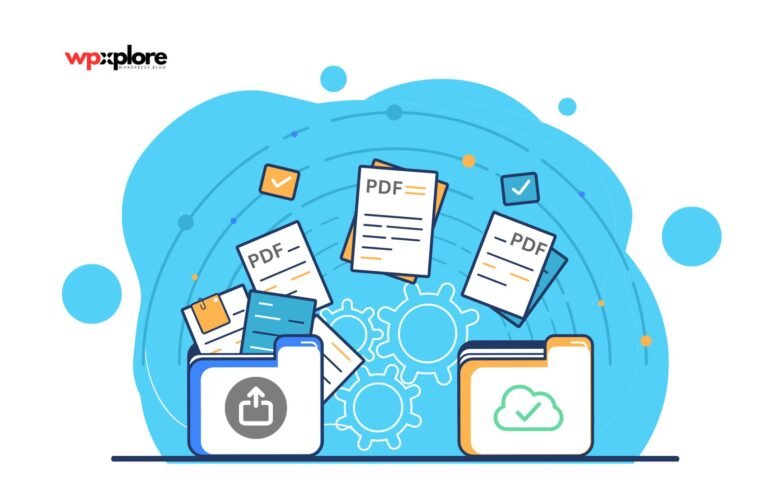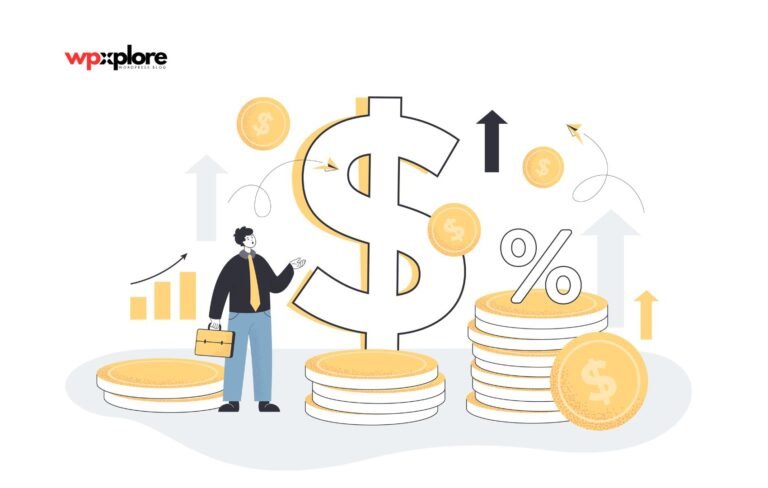Do you need help increasing your website’s visibility and driving organic traffic? Despite creating high-quality content, do you need help to reach your target audience?
The internet is highly competitive, and standing out can be challenging. Without effective SEO strategies, your website won’t grow, and your business will suffer.
The solution? Strategic blog submission. This guide will introduce you to the best free blog submission sites directory to boost your website’s SEO and drive targeted traffic. These directories offer valuable backlinks, enhance your website’s authority, and expand your reach. Let’s dive in and explore how these influential submission sites can help you achieve your online goals.
Every year, 3 billion blog posts are written. People are spending more and more money on content marketing, and it’s expected to grow by $584.02 billion by 2027
What Are Blog Submission Sites Directory?
Contents
- What Are Blog Submission Sites Directory?
- Benefits of Using Blog Submission Sites Directory
- Criteria for Choosing the Best Blog Submission Sites Directory
- Top-Rated Free Blog Submission Sites Directory
- Tips for Successful Blog Submission
- Common Mistakes to Avoid When Using Blog Submission Sites
- Final Words
- FAQs
- Q.1. What is the difference between blog submission and guest posting sites?
- Q.2. Can I submit the same blog post to multiple submission sites?
- Q.3. How often should I submit my blog posts to these sites?
- Q.4. How can I track the performance of my submissions across different sites?
- Q.5. Are there any risks associated with using free blog submission sites?
Blog submission sites are a valuable tool for digital marketing. They help bloggers increase the reach and effectiveness of their content. These platforms allow bloggers to get more eyes on their posts, leading to increased traffic and improved SEO performance.
A blog submission site directory is an online platform where bloggers can submit their blog posts or URLs to boost the visibility of their content. These sites act as directories, categorizing and listing blogs for readers and search engines to discover quickly.
The primary purpose of these sites is to provide a space for bloggers to showcase their content to a broader audience and to make it easier for users to find relevant articles based on their interests.
When a blog post is submitted to a blog submission site, it becomes part of its directory. This listing allows search engines to index the content more efficiently. By being part of a more significant site, the submitted blogs benefit from the higher domain authority and search engine rankings of the submission site itself.
As a result, the blog posts have a better chance of appearing in search engine results, increasing their visibility to potential readers.
The highest-ranked website on a search page doesn’t always get the most visitors. But if more websites link to a page, it’s usually ranked higher
Benefits of Using Blog Submission Sites Directory
Understanding the role and benefits of submitting your blog to directories can help you reach more people and make your content more effective. Whether you want to improve your website’s visibility on search engines, get more visitors, or make your blog more trustworthy, using blog submission sites can be a great strategy.
I. Better search engine rankings
When you submit your blog to sites with a good reputation, search engines are more likely to consider it reliable, which can help it rank higher in search results.
Submitting your blog to reputable directories can make your website more authoritative. Search engines will consider your blog more reliable when it is linked to many high-quality sites.
III. More traffic and readers
Submitting your blog to different directories can help you reach more people looking for your content. This can increase your website traffic and help you build a bigger audience.
IV. Better brand visibility and credibility
Submitting your blog to well-known directories helps people recognize your brand and trust your content more.
V. Getting backlinks
Blog submission sites can provide vital links to your website, which can help improve your search engine rankings and bring more visitors to your blog. These links tell search engines that your content is valuable and trustworthy.
Criteria for Choosing the Best Blog Submission Sites Directory
Not all blog submission sites are created equal. Choosing the right platforms is essential to maximize the benefits of submitting your blog to these directories. The following criteria can help you identify the best blog submission sites to boost your SEO, drive traffic, and enhance your blog’s authority.
Domain Authority (DA) is a metric developed by Moz that predicts how well a website will rank on search engine result pages (SERPs). It ranges from 1 to 100, with higher scores indicating a more remarkable ability to rank. A site’s DA is calculated based on multiple factors, including the number of total links, the quality of those links, and other SEO-related metrics.
When you submit your blog to sites with high DA, you benefit from the established authority of those platforms. Search engines consider Links from high-DA sites more valuable, helping boost your blog’s authority and improve its rankings. Therefore, targeting blog submission sites with high DA can significantly enhance your blog’s visibility and SEO performance.
B. Relevance to your niche
Relevance is key when selecting blog submission sites. Submitting your blog to directories connecting to your niche or industry ensures that your content reaches the right audience. This targeted approach improves the chances of discovering your content and increases the likelihood of attracting engaged and interested readers.
Niche-specific directories focus on particular topics, industries, or interests. Submitting your blog to these platforms aligns your content with users seeking information on those topics. This targeted exposure can lead to higher engagement rates, more meaningful interactions, and a stronger connection with your audience.
C. User-friendliness and submission guidelines
A user-friendly blog submission site simplifies the process, saving time and effort. Look for platforms with intuitive interfaces, clear instructions, and minimal submission steps. The easier it is to submit your blog, the more efficient your promotional efforts will be.
Each blog submission site may have its own set of guidelines and requirements. Adhering to these guidelines is crucial to ensure that your submission is accepted. Failure to comply with the rules can result in the rejection or removal of your content. Understanding and following these guidelines increases the chances of successful submissions and maintains the quality and reputation of your blog.
D. Active community and engagement
An active community indicates a vibrant platform where users frequently interact with content. Submitting your blog to sites with engaged user bases can lead to more views, comments, shares, and other forms of interaction. This engagement boosts traffic and signals to search engines that your content is valuable and worth ranking higher.
Platforms with active users can significantly boost your blog’s traffic. When readers engage with your content, they are likelier to share it with others, leading to a ripple effect that increases your blog’s reach. Engagement also helps build relationships with readers, turning them into regular visitors and potential subscribers.
E. Backlink quality
Backlinks are one of the most critical factors in SEO. However, not all backlinks are created equal. High-quality backlinks come from reputable, authoritative sites and can significantly boost your blog’s search engine ranking. Conversely, backlinks from low-quality or spammy sites can harm your SEO efforts.
When choosing blog submission sites, consider the quality of backlinks they provide. Sites with high DA, relevant content, and a good reputation will likely offer valuable backlinks. Using SEO tools to analyze a site’s backlink profile can help you determine the quality and potential impact of the links you may receive from submitting your blog.
66% of bloggers use SEO to get people to visit their website
Top-Rated Free Blog Submission Sites Directory
This section will explore some top-rated free blog submission sites that can help you increase your blog’s visibility and reach. These platforms offer unique features and benefits that can significantly boost your SEO and attract more readers.
1. LinkedIn

LinkedIn is a professional networking platform that allows users to publish articles directly on the site. It’s an excellent platform for sharing thought leadership and industry-specific content with a professional audience.
Key features
- Articles published on LinkedIn are automatically shared with your professional network, increasing the chances of engagement from industry peers.
- LinkedIn has high domain authority, which can positively impact your content’s SEO.
- LinkedIn provides insights on how many people have viewed, liked, or commented on your post, helping you track engagement.
2. Medium

Medium is a popular platform for writers and bloggers to share their content. Its large, diverse readership makes it a great place to gain exposure and build an audience.
Key features
- Medium’s large user base provides a built-in audience, increasing the likelihood of your content being discovered.
- Medium is known for its clean design, which enhances the reading experience.
- The medium allows readers to leave claps (likes) and comments and share articles, fostering community interaction.
3. IndieHackers

IndieHackers is a community-oriented platform focused on entrepreneurs and startups. It’s an ideal place to share business, technology, and entrepreneurship content.
Key features
- IndieHackers caters specifically to entrepreneurs and startup enthusiasts, ensuring that your content reaches a relevant audience.
- The platform encourages interaction through comments and discussions, helping you connect with other entrepreneurs.
- IndieHackers often feature success stories and interviews, providing additional exposure for your content.
4. Tumblr

Tumblr is a microblogging and social networking platform that allows users to share various types of content, including text, images, and videos. It’s popular among younger audiences and creative communities.
Key features
- Tumblr supports multiple content formats, making it versatile for different posts.
- Posts can easily be shared and reblogged, helping your content spread quickly within the Tumblr community.
- Tumblr lets you personalize your blog’s appearance, making it visually appealing to your audience.
5. Blogger

Blogger is a free blogging platform owned by Google. It’s user-friendly and integrates well with other Google services, making it a good choice for beginners.
Key features
- Blogger is a Google product That integrates seamlessly with Google Analytics, AdSense, and other Google tools.
- Blogger offers a range of templates and customization options to make your blog unique.
- Blogger provides free hosting, making it easy to start a blog without additional costs.
6. ArticleBiz

ArticleBiz is a content directory that accepts article submissions on various topics. It’s a straightforward platform for sharing informative content and gaining backlinks.
Key features
- ArticleBiz covers a wide range of topics, allowing you to submit articles on almost any subject.
- Submitting articles to ArticleBiz can help you gain backlinks and improve your blog’s SEO.
- The platform offers a simple submission process with clear guidelines.
7. Quora

Quora is a question-and-answer platform where users can ask questions and provide detailed answers. It also allows users to publish blog posts, making it a great place to share expertise and drive traffic.
Key features
- Quora has an active user base that engages through questions, answers, and upvotes.
- Answering questions and sharing valuable content can establish you as an expert.
- Quora’s algorithm suggests content to users based on their interests, increasing the chances of your blog being discovered.
8. HubPages

HubPages is a community of writers who publish content on various topics. It offers a revenue-sharing model, allowing writers to earn money from their articles.
Key features
- HubPages offers a monetization program where writers can earn from ad revenue generated by their content.
- The platform has an active community of readers and writers, fostering interaction and feedback.
- HubPages has good domain authority, which can help improve your content’s SEO ranking.
9. Substack

Substack is a platform for writers to publish newsletters and build subscriber lists. It’s ideal for sharing regular updates or long-form content with a dedicated audience.
Key features
- Substack allows you to publish content in a newsletter format that is delivered directly to subscribers’ inboxes.
- Writers can offer both free and paid subscriptions, providing monetization opportunities.
- Substack’s model encourages regular interaction with subscribers, fostering a loyal readership.
10. Postach

Postach.io is a blogging platform that integrates with Evernote. It allows users to turn their Evernote notes into blog posts, making it perfect for users who rely on Evernote for note-taking and content creation.
Key features
- Seamless integration with Evernote makes publishing blog posts directly from your notes easy.
- Postach.io offers a straightforward setup process, making it accessible to users with minimal technical skills.
- Users can choose from various themes and customize their blogs to suit their style.
These top-rated free blog submission sites provide various options for sharing your content, each with unique features that can help boost your visibility, SEO, and audience engagement. These platforms can effectively expand your reach and enhance your blog’s impact.
Tips for Successful Blog Submission
Submitting your blog to directories can significantly boost its visibility, but certain best practices should be followed to make the most of these platforms. Here are some tips to ensure your blog submissions are effective and drive the desired results.
i. Optimize your blog posts
Before submitting your blog to any directory, ensure it is optimized for search engines. Keyword optimization is critical as it helps your content rank higher in search results. Use relevant keywords throughout your blog post, including title, headings, and body text. This will make it easier for search engines to index your content and for readers to find it.
The title of your blog post is the first thing readers and search engines see. A catchy, engaging title can increase clicks and improve your click-through rate (CTR). Additionally, write compelling meta descriptions that summarize the content and include primary keywords. Meta descriptions are crucial in encouraging users to click on your link when it appears in search results or blog submission sites.
ii. Consistent Submissions
Consistency is key when it comes to blog submissions. Regularly submitting your blog to various directories keeps your content fresh and continuously brings in traffic. By maintaining a steady submission schedule, you can create a sustained flow of visitors, which helps build a loyal readership over time.
To ensure consistency, create a submission schedule. Determine how often you will submit your blog posts and stick to that plan. Depending on your content production rate and marketing strategy, this could be weekly, bi-weekly, or monthly. A schedule helps you stay organized and regularly engage with different submission platforms.
iii. Monitor and track performance
To understand the effectiveness of your blog submissions, use tracking tools. Google Analytics, for instance, can help you monitor the traffic generated from submission sites. You can track metrics such as the number of visits, bounce rate, and time spent on your blog to gauge the impact of your submissions.
Analyzing performance metrics is crucial for optimizing future submissions. Look at which directories drive the most traffic, which result in longer session durations, and which have higher engagement rates. Use this data to refine your submission strategy, focusing more on platforms that deliver the best results.
Common Mistakes to Avoid When Using Blog Submission Sites
While blog submission sites can be highly beneficial, inevitable mistakes can undermine your efforts. Here are some common pitfalls to avoid to ensure your submissions are successful.
a. Ignoring submission guidelines
Each blog submission site has its own set of guidelines and rules. Ignoring these guidelines can lead to the rejection of your submission, wasting your time and effort. Some sites may also penalize or blacklist you for non-compliance, affecting your reputation and future submission opportunities.
Before submitting your blog, read and understand each platform’s submission guidelines carefully. Ensure your content adheres to the required format, length, and quality standards. Following the guidelines increases the chances of accepting your submission and enhances your blog’s credibility.
b. Spamming multiple sites
Submitting the same blog post to many sites in a short period can be considered spamming. Search engines may view this as a manipulative tactic, which could lead to penalties or a drop in rankings. Moreover, it can damage your brand’s reputation if users perceive your content as spammy.
Focus on quality over quantity. Select a few high-quality, relevant directories and submit your blog to them. Tailor your submissions to each platform’s audience and adjust your content if necessary. This approach prevents your submissions from being flagged as spam and increases the likelihood of genuine engagement and traffic.
c. Not Engaging with the Community
Blog submission sites often have communities of readers and writers. Simply submitting your blog without engaging with the community can result in missed opportunities for networking, feedback, and growth. Engagement can lead to more exposure, as active participants are more likely to share and promote each other’s content.
Take the time to interact with other users on submission platforms. Leave thoughtful comments on other blogs, share interesting posts, and respond to feedback on your submissions. Building relationships within these communities can enhance your credibility, foster a sense of belonging, and encourage others to engage with your content in return.
Following these tips and avoiding common mistakes can maximize the benefits of blog submission sites directory. Effective use of these platforms can boost your blog’s SEO, attract more traffic, and establish authority in your niche.
Final Words
Blog submission sites directory offer a powerful way to enhance your online presence, boost your SEO, and drive more traffic to your blog. Submitting your content to the right platforms can improve your website’s domain authority, gain valuable backlinks, and reach a broader audience.
It’s important to remember that following practices, such as optimizing your blog posts, maintaining consistent submissions, and engaging with the community, will maximize your benefits.
We encourage you to use the recommended blog submission sites directory to see the impact on your blog’s performance. Whether you’re a seasoned blogger or just starting, these submission sites can provide valuable exposure and help you grow your readership.
If you have any further questions about using these submission sites or would like to suggest additional platforms to add to the list, please feel free to share your thoughts in the comments below. Your input is valuable, and we’d love to hear about your experiences and preferences!

FAQs
Q.1. What is the difference between blog submission and guest posting sites?
Blog submission sites are directories where you can submit your existing blog posts for greater visibility. In contrast, guest posting sites typically require you to create original content for their platform.
Q.2. Can I submit the same blog post to multiple submission sites?
You can submit the same blog post to multiple sites, but avoiding spamming by submitting too many at once and ensuring the sites permit duplicate content is essential. Alternatively, you can add a note about the originality of the post to the footer.
Q.3. How often should I submit my blog posts to these sites?
It’s recommended to submit consistently, such as once a week or bi-weekly, depending on your content production rate, to maintain regular traffic and visibility.
Q.4. How can I track the performance of my submissions across different sites?
You can use tools like Google Analytics, UTM parameters, and the analytics provided by each submission platform to track the traffic, engagement, and conversions generated by your submissions.
Q.5. Are there any risks associated with using free blog submission sites?
Potential risks include getting penalized by search engines for duplicate content, low-quality backlinks, or submitting to spammy sites. It’s essential to choose reputable sites and follow best practices.








Leave a Comment